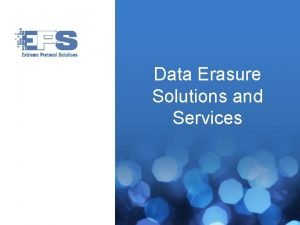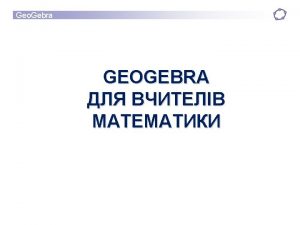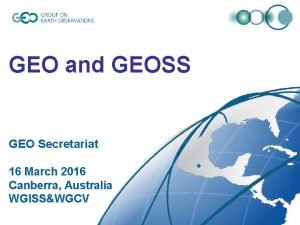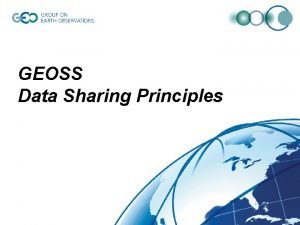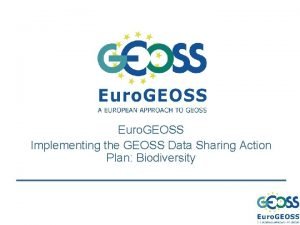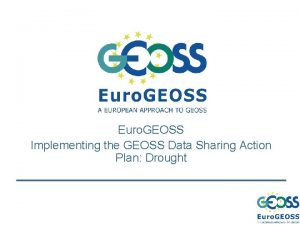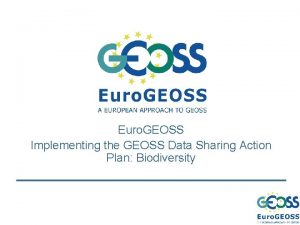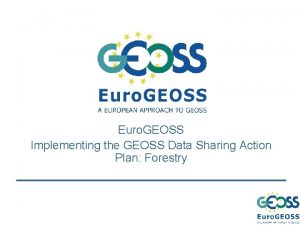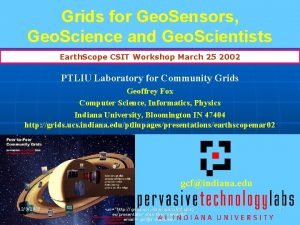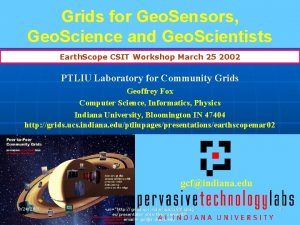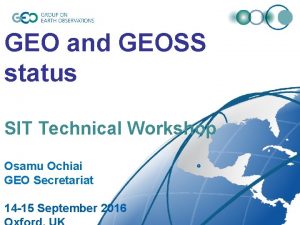GEO Data Providers Workshop Introducing GEOSS Data Providers














- Slides: 14

GEO Data Providers Workshop Introducing GEOSS Data Providers Steven Ramage 20 April, 2017 Florence, Italy

Workshop participants from 95 organizations

Workshop participants continued…

Implementing GEOSS through GCI

158 Brokered Data Providers (April, 2017)

Introducing Data Providers • 95 different organizations • 47 data providers already contributing to the GCI • 51 potential new data providers

Introducing Data Providers Non-for-profit research and innovation companies Research Institutes - National and International National Research Council (Italy) National Geographic & Research Institutes Regional Research Centers Humanitarian and Environmental NGOs United Nations and The World Bank Governmental and Intergovernmental Agencies National Space and Specialized Agencies Private sector

How do you contribute to the GEO Vision? Encourage and facilitate the use of geospatial data to assist in data driven policy and the development of solutions By making the datasets discoverable with the help of GEOSS, the datasets become more visible to other communities. In this way, for example, ECMWF open data can be shared with other communities, which increases data uptake and thus, the overall value of the data Eg. WWF supports spatial data transparency to help monitor changes to the natural world and secure accountability for companies, investors,

• Data types: some of 200 million + resources Satellite Imagery • Environmental data • Arctic Observations • Weather predictions • Geological data • In-situ data on mountain climate, water resources, glaciers, ecosystems • • • Ex-situ measurement results – mainly activity concentrations of naturally occurring and anthropogenic -radionuclides in seawater, marine sediment and marine biota. Renewable energy Geospatial Information for management of natural disasters, man-made emergency situations and humanitarian crises Water temperature, salinity, dissolved oxygen, nutrients, air temperature Time series of ecosystem related data, covering a very wide range of topics, both data on biodiversity and non-biotic topics GRI: Orthoimages, DEM, Land Cover/Use, Transportation network, Hydrographic network, Urban Settlements

Why share data through GEO – GCI? From Jamstec: Contribution to GEOSS is one of the important mission of JAMSTEC and we expect more users of our data/samples from international research communities. From Copernicus: The free and open data access policy of Copernicus is in-line with GEO open data policies and thus CEMS becoming a data provider for GEO is very relevant. We believe that this will not only raise awareness about the service in the GEO community but also provide possibilities for collaboration including data and knowledge exchange. From China GEOSS: GEO provide a platform to make the GCdata. PR well known and make the staff communicate with other data providers From Webservice Energy: Provide a mean to disseminate at a larger scale data for the good of the renewable energy community From SIOS: SIOS would like to contribute to GEO as a data provider as we believe that it is in SIOS’s interest to make the data more widely available, which

Why share data through GEO – GCI? From ECMWF: GEO brings together many different communities and it increases the visibility of a data organisation. From Eurac: In joining the GCI there could be more options to share the research result, gaining more visibility, fostering further research and innovation activities From NEXT Data: Because it is one of the main ways to distribute data and knowledge in an open and world-wide setting. From HOT: Through our participation in GEO, we want to continue to advance the use of open source tools for applying Open. Street. Map and other open data to solve humanitarian and global development issues. We see our membership as a way for us to continue progress toward achieving the Sustainable Development Goals

How could GEO benefit your organization? From Ecopotential: Wider visibility and link with a larger set of open-access data From NODC: The participation of RNODC in the workshop will enable us to enter into the data exchange, to receive information on the development and application of software tools created within the GEOSS system From IGNV: GEO would give us visibility and the opportunity to share data with a great number of users and institutions.

GEO Data Providers’ Statements http: //earthobservations. org/me_201704_d pw. php

Break out session Benefits Challenges and Issues Communication Role of Private Sector 15 Minutes each – Please write your answers on a Post-It! (legible hand writing please!)
 Data erasure solutions for service providers
Data erasure solutions for service providers Signal phrases to introduce quotes
Signal phrases to introduce quotes Introducing phonology answer key
Introducing phonology answer key 1941-1882
1941-1882 Quote sentence starters
Quote sentence starters Argumentative essay counterclaim
Argumentative essay counterclaim Introduce yourself interview
Introduce yourself interview Talk boost tracker
Talk boost tracker Introducing family members in french
Introducing family members in french Diamante poem examples
Diamante poem examples Alimentary canal
Alimentary canal Company background of kfc
Company background of kfc Introducing integers
Introducing integers Mpls internet access
Mpls internet access Quote citation
Quote citation
